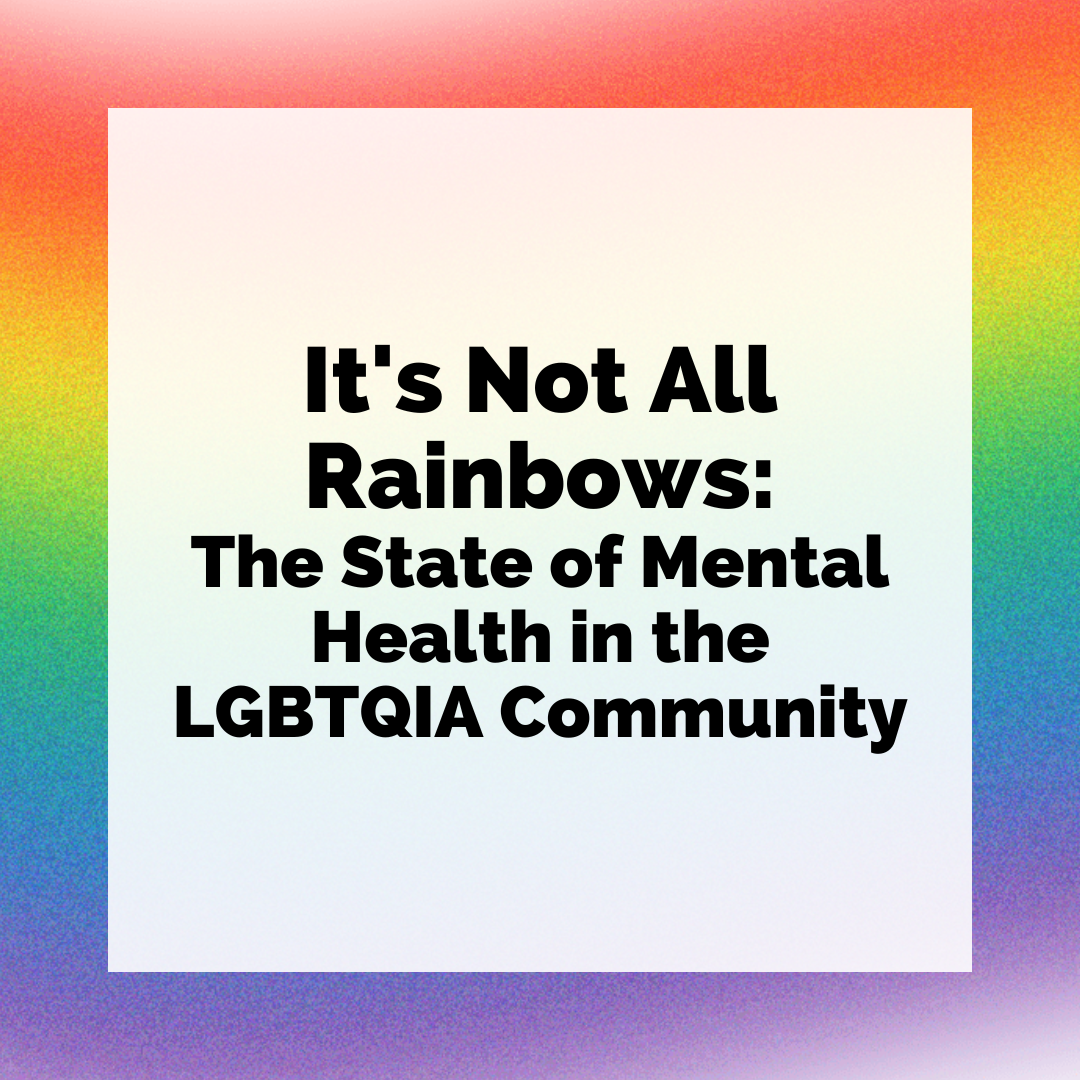
Mental Health and the LGBTQIA Community
Pride month is a great time to celebrate the LGBTQIA community. And while there’s much to celebrate, June is also a great time to bring awareness to some of the unique mental health challenges the community faces. Unfortunately, the statistics don’t lie. The LGBTQIA community faces higher rates of mental health challenges due to societal issues, lack of acceptance from friends and family, poor availability of resources, and challenging legislation. For example, did you know…
- LGB adults are more than twice as likely as heterosexual adults to experience a mental health condition.
- Transgender individuals are nearly four times as likely as cisgender individuals to experience a mental health condition.
- LGB youth are more than twice as likely to report experiencing persistent feelings of sadness or hopelessness than their heterosexual peers.
- 48% of transgender adults report that they have considered suicide in the last year, compared to 4% of the overall US population.
Unique Mental Health Challenges
Why is the current state of mental health so bleak for the LGBTQIA community? The answer is complex and nuanced. Depression, one of the most prevalent mental health conditions, involves feelings of despair, hopelessness, self-guilt, and a loss of motivation. While it can be caused by any number of things, persistent psychological stress is recognized as a contributing factor. In addition, stigma, discrimination, and lack of legal protections can all contribute to depression among marginalized groups such as the LGBTQIA community.
Even those who people are supposed to trust–friends, family members, and even doctors–contribute to stigma and the continued stress LGBTQIA individuals experience. As many as 43% of youths are kicked out of their homes due to a lack of family acceptance. Seeking treatment for depression or mental health conditions can even worsen the problem, as many people report they don’t feel their healthcare providers treat them with dignity or respect.
Consider the constant stressors. Living in a world of frequent, unrelenting discrimination and bias, not to mention sexism and violence, is bound to have a significant impact on mental health.
How to Support the LGBTQIA Community
It all starts with understanding and acceptance. According to the Trevor Project, LGBTQIA youth who feel that their communities are accepting of them are far less likely to attempt suicide than those in unaccepting or moderately accepting communities. But what does acceptance look like? Here are some ways you can do your part to change the environment, narrative, and attitudes:
- Treat LGBTQIA individuals like you would anyone else (and the way you want to be treated). Identifying as LGBTQIA is only part of who someone is. There’s a lot more to talk about than just gender or orientation. Learn more about the rest of who they are!
- Learn the right language and use it. Listen when LGBTQIA individuals speak and learn how they refer to themselves, including their pronoun use. Try to reflect their language about their identity and partners. It’s also okay to ask. If you make a mistake, try again without being defensive.
- Speak out when you hear discrimination and homophobic or transphobic remarks. This is especially important with friends and family. They trust you and they may not know that you won’t tolerate language like this until you speak up.
- Write to your elected officials to advocate for LGBTQIA rights and protections. Educate yourself on any laws or initiatives that may be detrimental to the community and do your part to ensure legislation isn’t a barrier to mental health.
- Donate funds to organizations that support the LGBTQIA community. These organizations know the most effective ways to mobilize people, inform policy, and get the word out. Your money helps them do their best work.
Ways for LGBTQIA Individuals to Get Support
There are a number of great resources for the LGBTQIA community. The following organizations are dedicated to making the world safer, healthier, and happier for LGBTQIA individuals:
- The Association of Gay and Lesbian Psychiatrists: Offers many resources for LGBT individuals experiencing mental health conditions and psychiatric professionals with LGBT clients.
- The Gay and Lesbian Medical Association’s Provider Directory: A search tool that can locate a LGBTQ-inclusive health care provider.
- The LGBT National Help Center: Offers confidential peer support connections for LGBT youth, adults and seniors, including phone, text and online chat.
- The National Center for Transgender Equality: Offers resources for transgender individuals, including information on the right to access health care.
- The Trevor Project: A support network for LGBTQ youth providing crisis intervention and suicide prevention, including a 24-hour text line (text “START” to 678678).
- Society for Sexual, Affectional, Intersex, and Gender Expansive Identities (SAIGE): Delivers educational and support resources for LGBTQ individuals, as well as promotes competency on LGBTQ issues for counseling professionals.
- Depression Looks Like Me: Depression Looks Like Me is a program – sponsored by the Johnson & Johnson Company and supported by an alliance of other partners – that aims to educate and empower LGBTQ+ people with depression.
And never underestimate the power of community. At Circles, we build communities so people can connect directly with others who have been there and have lived with the same challenges. With group therapy sessions like Healing from Gay Shame and Having Children in the LGBTQIA Community, you’re only minutes away from people who understand.


